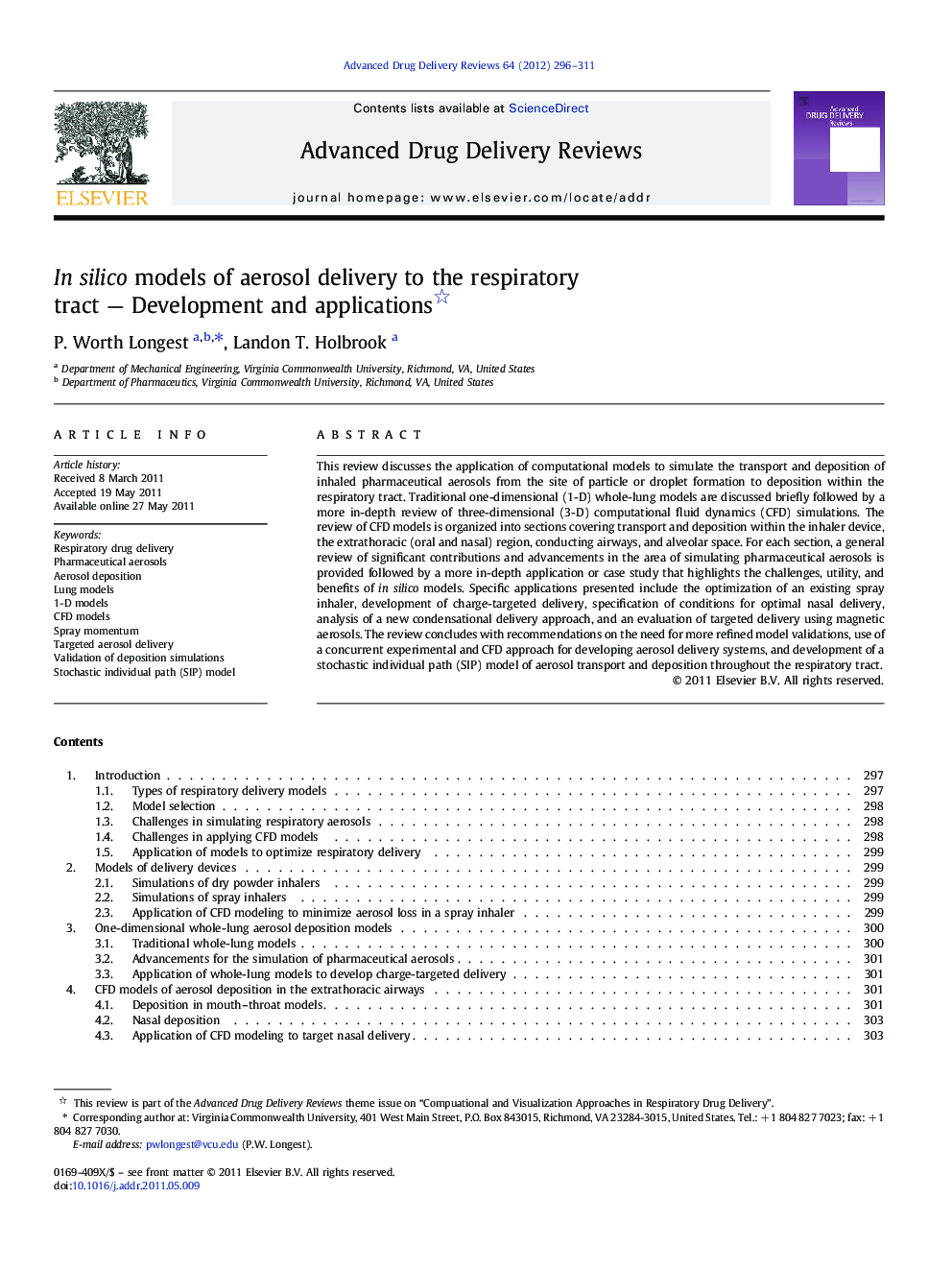| Article ID | Journal | Published Year | Pages | File Type |
|---|---|---|---|---|
| 2072186 | Advanced Drug Delivery Reviews | 2012 | 16 Pages |
This review discusses the application of computational models to simulate the transport and deposition of inhaled pharmaceutical aerosols from the site of particle or droplet formation to deposition within the respiratory tract. Traditional one-dimensional (1-D) whole-lung models are discussed briefly followed by a more in-depth review of three-dimensional (3-D) computational fluid dynamics (CFD) simulations. The review of CFD models is organized into sections covering transport and deposition within the inhaler device, the extrathoracic (oral and nasal) region, conducting airways, and alveolar space. For each section, a general review of significant contributions and advancements in the area of simulating pharmaceutical aerosols is provided followed by a more in-depth application or case study that highlights the challenges, utility, and benefits of in silico models. Specific applications presented include the optimization of an existing spray inhaler, development of charge-targeted delivery, specification of conditions for optimal nasal delivery, analysis of a new condensational delivery approach, and an evaluation of targeted delivery using magnetic aerosols. The review concludes with recommendations on the need for more refined model validations, use of a concurrent experimental and CFD approach for developing aerosol delivery systems, and development of a stochastic individual path (SIP) model of aerosol transport and deposition throughout the respiratory tract.
Graphical abstractFigure optionsDownload full-size imageDownload high-quality image (259 K)Download as PowerPoint slide
